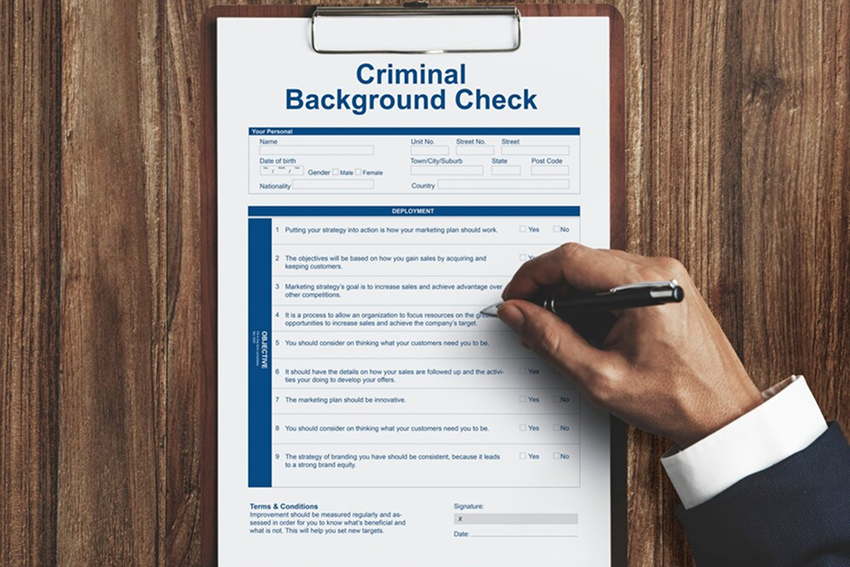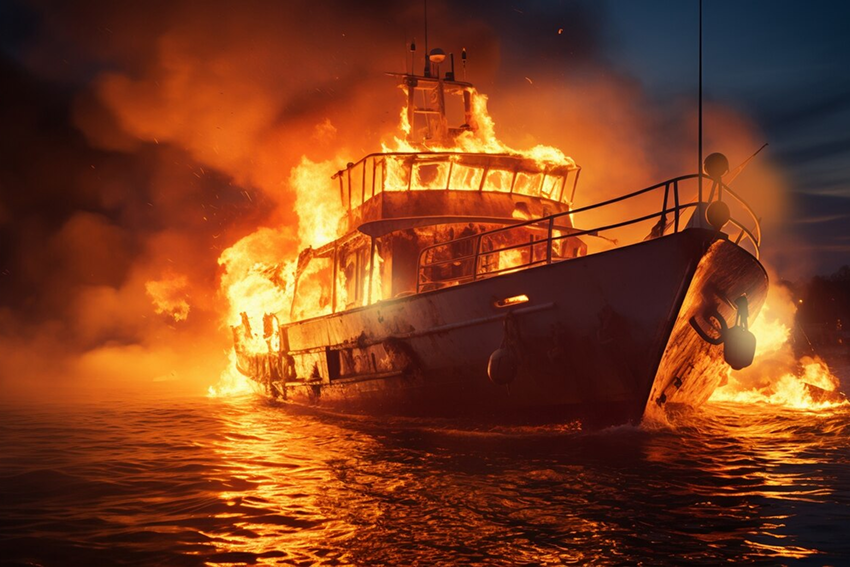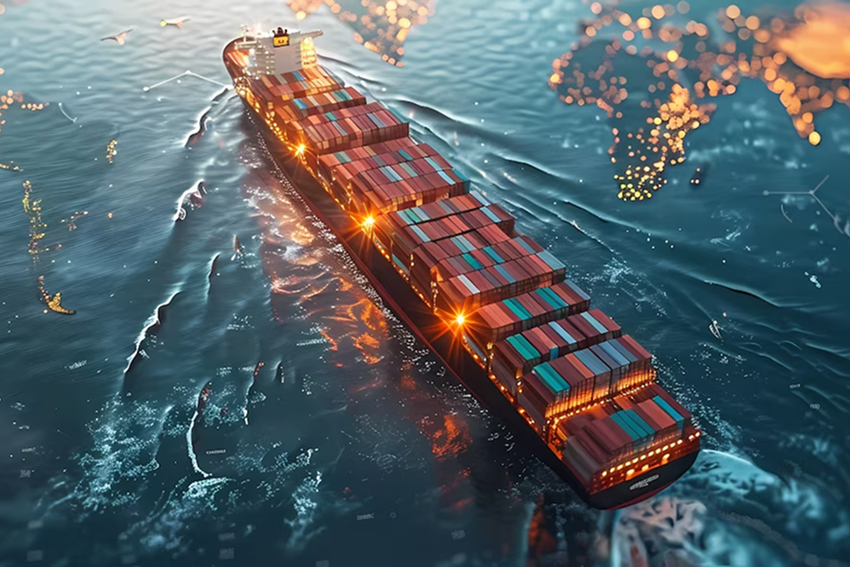Marine Specific Voyage/Transit Insurance
Marine Specific Voyage Insurance covers goods, vessels, or assets during a single journey, protecting against risks from departure to destination.
- Single Voyage/transit Coverage
- Financial Security
- Comprehensive Protection

What is Marine Specific Voyage/transit Insurance?
Marine Specific Voyage/transit Insurance is a type of marine insurance that provides coverage for goods, vessels, or other assets during a single, specific voyage/transit. Unlike annual or open policies, which cover multiple trips over a certain period, this insurance is tailored to protect against risks encountered on a particular journey from the point of departure to the final destination.
Key Features of Marine Specific Voyage/Transit Insurance

Marine Specific Voyage/Transit Insurance Ideal For
One-Time Shipments
Businesses or individuals shipping goods that require insurance for a single journey rather than multiple trips.
High-Value Cargo
Shipments involving high-value goods where the risks associated with a specific voyage/transit need to be covered comprehensively.
Specialized Routes
Cargo traveling through high-risk areas or on specialized routes where additional coverage might be necessary due to the nature of the journey.

Marine Specific Voyage/Transit Insurance Ideal For
One-Time Shipments
Businesses or individuals shipping goods that require insurance for a single journey rather than multiple trips.
High-Value Cargo
Shipments involving high-value goods where the risks associated with a specific voyage/transit need to be covered comprehensively.
Specialized Routes
Cargo traveling through high-risk areas or on specialized routes where additional coverage might be necessary due to the nature of the journey.
Benefits of Marine Specific Voyage/Transit Insurance
Flexibility
Coverage can be customized for the specific needs of the voyage/transit, providing peace of mind to shippers.
Protection Against Specific Risks
The insurance can be tailored to protect against unique risks of the journey, ensuring that all potential threats are considered.
Financial Security
In the event of loss or damage, the insured can recover the value of the cargo, minimizing the financial impact of unforeseen events.

Benefits of Marine Specific Voyage/Transit Insurance
Flexibility
Coverage can be customized for the specific needs of the voyage/transit, providing peace of mind to shippers.
Protection Against Specific Risks
The insurance can be tailored to protect against unique risks of the journey, ensuring that all potential threats are considered.
Financial Security
In the event of loss or damage, the insured can recover the value of the cargo, minimizing the financial impact of unforeseen events.
Difference between Marine Specific Transit, Marine Open Declaration & Marine Annual Sales Turn Over Insurance
| Feature | Marine Specific Voyage Insurance | Marine Open Declaration Policy | Marine Annual Sales Turnover Policy |
|---|---|---|---|
| Coverage Scope | Covers a single, specific voyage or transit. | Covers multiple shipments under a single policy up to a declared value. | Covers all shipments during the policy period based on annual turnover. |
| Policy Period | Valid only for the duration of a specific voyage. | Typically valid for one year, but only for declared shipments. | Typically valid for one year, covering all shipments within that period. |
| Flexibility | Limited flexibility; covers only the declared voyage. | Flexible; allows declaration of shipments as they occur. | Highly flexible; covers all shipments without the need for individual declarations. |
| Premium Payment | Single premium payment for the specific voyage. | Premiums are adjusted based on the value of shipments declared. | Premiums are calculated based on the estimated annual sales turnover. |
| Documentation | Requires individual policy issuance for each voyage. | Requires declarations for each shipment, usually on a monthly basis. | Minimal documentation; no need for individual shipment declarations. |
| Best Suited For | Businesses with infrequent or irregular shipments. | Businesses with regular shipments but varying volumes. | Businesses with high and consistent shipment volumes throughout the year. |

| Feature | Marine Specific Voyage Insurance | Marine Open Declaration Policy | Marine Annual Sales Turnover Policy |
|---|---|---|---|
| Coverage Scope | Covers a single, specific voyage or transit. | Covers multiple shipments under a single policy up to a declared value. | Covers all shipments during the policy period based on annual turnover. |
| Policy Period | Valid only for the duration of a specific voyage. | Typically valid for one year, but only for declared shipments. | Typically valid for one year, covering all shipments within that period. |
| Flexibility | Limited flexibility; covers only the declared voyage. | Flexible; allows declaration of shipments as they occur. | Highly flexible; covers all shipments without the need for individual declarations. |
| Premium Payment | Single premium payment for the specific voyage. | Premiums are adjusted based on the value of shipments declared. | Premiums are calculated based on the estimated annual sales turnover. |
| Documentation | Requires individual policy issuance for each voyage. | Requires declarations for each shipment, usually on a monthly basis. | Minimal documentation; no need for individual shipment declarations. |
| Best Suited For | Businesses with infrequent or irregular shipments. | Businesses with regular shipments but varying volumes. | Businesses with high and consistent shipment volumes throughout the year. |
| Risk Management | Limited to the specific voyage covered. | Provides continuous coverage but requires accurate declaration. | Comprehensive coverage for the entire year without the need for individual shipment oversight. |
| Cost Efficiency | Potentially higher cost per shipment due to individual policies. | Cost-effective for regular shippers with varying shipment sizes. | Cost-effective for businesses with consistent shipment volumes and values. |
| Claim Process | Claims are processed based on the specific policy for the voyage. | Claims are processed for declared shipments under the policy. | Claims are processed under the annual policy, covering all shipments. |
| Customization | Customizable for specific routes or cargo types. | Customizable for declared shipments but within the overall policy limits. | Less customization; covers all shipments under a broad policy framework. |
How to Obtain Marine Specific Voyage/transit Insurance
Assessment of Risk
Start by assessing the risks associated with the specific voyage/transit. Consider factors such as the route, type of cargo, and transport method.
Choose Coverage Options
Work with an insurance provider to select the appropriate coverage options for the voyage/transit. This may include basic coverage for general risks or more comprehensive protection for high-risk journeys.
Get a Quote
Obtain a quote based on the coverage needed for the specific voyage/transit. Ensure that the coverage aligns with the value of the cargo and the potential risks involved.
Purchase and Activate
Once the terms are agreed upon, purchase the policy and ensure it is activated before the cargo begins its journey.
Key Coverage Under Marine Specific Voyage/transit Insurance
Loss or Damage to Cargo
Protects against physical loss or damage to the insured goods due to accidents, natural disasters, or other covered perils during transit.
General Average
Covers the insured’s share of loss when part of the cargo is sacrificed to save the vessel or the remaining cargo. This is a common provision in maritime law that ensures all parties share the financial burden of such a sacrifice.
Particular Average
Offers protection for partial losses that are not shared among other cargo owners, providing compensation for damage to specific goods.
Delay in Transit
Some policies may cover losses arising from delays in transit due to covered perils, which may result in financial loss or spoilage of goods.
Jettison
Covers losses when cargo is deliberately thrown overboard to lighten the vessel in an emergency, protecting the insured from financial loss.

Key Coverage Under Marine Specific Voyage/transit Insurance
Loss or Damage to Cargo
Protects against physical loss or damage to the insured goods due to accidents, natural disasters, or other covered perils during transit.
General Average
Covers the insured’s share of loss when part of the cargo is sacrificed to save the vessel or the remaining cargo. This is a common provision in maritime law that ensures all parties share the financial burden of such a sacrifice.
Particular Average
Offers protection for partial losses that are not shared among other cargo owners, providing compensation for damage to specific goods.
Delay in Transit
Some policies may cover losses arising from delays in transit due to covered perils, which may result in financial loss or spoilage of goods.
Jettison
Covers losses when cargo is deliberately thrown overboard to lighten the vessel in an emergency, protecting the insured from financial loss.
Theft and Piracy
Protection against theft or hijacking of cargo during the voyage/transit, which is crucial for shipments passing through high-risk areas.
Add-on Coverages Under Marine Specific Voyage/transit Insurance
There are many other add-on coverages as well, which can vary depending on the specific proposal and the insurer. These add-on coverages allow businesses to customize their Marine Specific Voyage/transit Insurance to meet the specific needs of each journey, providing comprehensive protection against a wide array of potential risks.

Institute Clause/Coverage
| Clauses | Coverage Type | Jurisdiction | Exclusions | Ideal For | Typical Perils Covered |
|---|---|---|---|---|---|
| ICC-A (International Cargo Clauses A) | All Risks | International Shipments | Inherent vice, delay, inadequate packaging | High-value goods requiring broad protection | All perils except those specifically excluded |
| ICC-B (International Cargo Clauses B) | Named Perils | International Shipments | Inherent vice, delay, inadequate packaging | Goods exposed to moderate risks | Fire, explosion, theft, earthquake, etc. |
| ICC-C (International Cargo Clauses C) | Basic Named Perils | International Shipments | Inherent vice, delay, inadequate packaging | Basic goods with minimal risk | Fire, explosion, vessel sinking, collision, etc. |
| ITC-A (Inland Transit Clauses A) | All Risks | Inland Transit | Inherent vice, delay, inadequate packaging | High-value goods during inland transit | All perils except those specifically excluded |
| ITC-B (Inland Transit Clauses B) | Named Perils | Inland Transit | Inherent vice, delay, inadequate packaging | Goods exposed to moderate risks during inland transit | Fire, explosion, theft, earthquake, etc. |
| ITC-C (Inland Transit Clauses C) | Basic Named Perils | Inland Transit | Inherent vice, delay, inadequate packaging | Basic goods with minimal risks during inland transit | Fire, explosion, overturning, collision, etc. |

| Clauses | Coverage Type | Jurisdiction | Exclusions | Ideal For | Typical Perils Covered |
|---|---|---|---|---|---|
| ICC-A (International Cargo Clauses A) | All Risks | International Shipments | Inherent vice, delay, inadequate packaging | High-value goods requiring broad protection | All perils except those specifically excluded |
| ICC-B (International Cargo Clauses B) | Named Perils | International Shipments | Inherent vice, delay, inadequate packaging | Goods exposed to moderate risks | Fire, explosion, theft, earthquake, etc. |
| ICC-C (International Cargo Clauses C) | Basic Named Perils | International Shipments | Inherent vice, delay, inadequate packaging | Basic goods with minimal risk | Fire, explosion, vessel sinking, collision, etc. |
| ITC-A (Inland Transit Clauses A) | All Risks | Inland Transit | Inherent vice, delay, inadequate packaging | High-value goods during inland transit | All perils except those specifically excluded |
| ITC-B (Inland Transit Clauses B) | Named Perils | Inland Transit | Inherent vice, delay, inadequate packaging | Goods exposed to moderate risks during inland transit | Fire, explosion, theft, earthquake, etc. |
| ITC-C (Inland Transit Clauses C) | Basic Named Perils | Inland Transit | Inherent vice, delay, inadequate packaging | Basic goods with minimal risks during inland transit | Fire, explosion, overturning, collision, etc. |
| Institute Cargo Clauses (Air) | All Risks | Air Transit | War, inherent vice, delay | High-value goods transported by air | All risks except those specifically excluded |
| Institute War Clauses (Cargo) | War Risks | International Shipments | General exclusions apply | Goods in war zones or high-risk areas | War, civil war, revolution, rebellion, etc. |
| Institute Strikes Clauses (Cargo) | Strikes, Riots, Civil Commotions | International Shipments | General exclusions apply | Goods in areas prone to strikes or civil unrest | Strikes, riots, civil commotions, etc. |
| Institute Theft, Pilferage, and Non-Delivery (TPND) Clauses | Theft, Pilferage, Non-Delivery | International and Domestic Shipments | General exclusions apply | High-value or easily marketable goods | Theft, pilferage, non-delivery |
| Institute Frozen Food Clauses (A) | All Risks for Frozen Food | Frozen Food Shipments | Inherent vice, temperature control failure (unless caused by insured peril) | Frozen food requiring maximum protection | All risks except those specifically excluded |
| Institute Frozen Food Clauses (B) | Named Perils for Frozen Food | Frozen Food Shipments | Inherent vice, temperature control failure | Frozen food with limited risk exposure | Fire, explosion, collision |
| Institute Container Clauses | All Risks for Containers | Containerized Cargo | General exclusions apply | Shipments using containers | All risks except those specifically excluded |
| Institute Cargo Clauses (Disbursements) | Disbursements | Cargo Disbursements | General exclusions apply | Shipments with significant disbursements | Disbursements due to insured risks |
Non-Institute Clause/Coverage
General Average
Coverage:
Ensures that all parties in a sea voyage share the loss if part of the cargo is sacrificed to save the vessel. This coverage compensates the insured for their share of the loss.
Ideal for:
Shipments exposed to significant maritime risks.
Pair and Set Clause
Coverage:
If one item in a pair or set is damaged, this clause provides compensation for the loss by considering the reduced value of the remaining items.
Ideal for:
Goods that are part of a matched pair or set, such as luxury items or machinery components.
Debris Removal Clause
Coverage:
Covers the costs associated with removing debris after an insured event, such as a shipwreck or cargo spill, ensuring that the insured is not burdened with these additional expenses.
Ideal for:
Shipments involving potentially hazardous or bulky cargo.
Concealed Damage Clause
Coverage:
Provides coverage for damage that is not immediately apparent upon delivery but is discovered later, typically within a specified period.
Ideal for:
Goods that may be susceptible to hidden damage, such as electronics or machinery.
Sue and Labor Clause
Coverage:
Requires the insured to take reasonable steps to prevent or minimize a loss, with the insurer reimbursing the costs of these actions. This coverage encourages proactive measures to protect the cargo.
Ideal for:
Shipments where the insured has the capacity to intervene in mitigating potential losses.
Institute Replacement Clause
Coverage:
Provides coverage for the cost of replacing damaged or lost items with new ones, rather than just compensating for the item’s depreciated value.
Ideal for:
High-value goods where replacement with new items is crucial, such as industrial equipment or high-end consumer goods.
Waiver of Subrogation Clause
Coverage:
Prevents the insurer from seeking reimbursement from third parties who may be responsible for the loss. This clause is often used to maintain business relationships between the insured and third parties.
Ideal for:
Shipments involving long-term partnerships or contracts where maintaining good relationships is key.
Accumulation Clause/200% Accumulation Clause
The Accumulation Clause allows insurance coverage to extend beyond standard limits if goods unexpectedly accumulate during transit due to factors like delays or accidents. The insurer’s liability can increase up to 200% of the original conveyance limit, provided the insured notifies the insurer promptly. This clause is designed to cover unforeseen buildups of goods, particularly at locations like transshipment ports, where the value of goods may exceed the expected limits.
Ideal For: High-value shipments where unforeseen accumulations could occur, particularly at transshipment ports or during delays.
Aircraft Clause
The Aircraft Clause ensures that terms like ‘ship,’ ‘vessel,’ and ‘seaworthiness’ in the policy also apply to air transport, using equivalents like ‘aircraft’ and ‘airworthiness.’ This clause is used when there is a need for restricted coverage for air transits, as there are no specific Institute clauses equivalent to ICC B and C for air travel. It ensures that the policy remains appropriate and avoids disputes about coverage.
Ideal For: Shipments that involve both sea and air transport, or goods transported entirely by air that need specific coverage.
Airfreight Replacement Clause
The Airfreight Replacement Clause covers the costs of airfreighting damaged goods or replacement parts for repair and returning them to the original destination, even if the original shipment was by sea. This clause, also known as the expediting expenses clause, is subject to a specified sub-limit and ensures timely repairs and replacements by covering the additional airfreight costs.
Ideal For: High-value goods requiring timely repairs or replacements, especially when the original shipment was by sea.
Brands Clause
The Brands Clause ensures that if branded or trademarked goods are damaged, the brands or trademarks must be removed before the goods are salvaged or sold. This protects the reputation of the brand or supplier. However, the clause can limit the insurer’s ability to reduce claim amounts through salvage sales, especially when the brand or trademark cannot be removed.
Ideal For: Luxury goods, electronics, or any branded products where maintaining brand reputation is crucial.
Concealed Damage Clause
The Concealed Damage Clause covers loss or damage discovered when containers or packages are opened after transit, assuming the damage occurred during the insured transit unless proven otherwise. This coverage applies if the damage is found within 30 days of the end of transit. The clause addresses the issue of hidden damage that can go unnoticed due to modern packing methods and containerization.
Ideal For: Luxury goods, electronics, or any branded products where maintaining brand reputation is crucial.
Container Clause
The Container Clause assumes that the container carrying the insured cargo is fit for use, unless the assured or their employees are aware of any unfitness. This clause is important because containers can have issues like holes or rust that may cause water damage during transit. While pre-shipment inspections are recommended, they can be challenging to conduct, especially for traders or when dealing with large volumes of goods.
Ideal For: High-volume shipments in containers, where container integrity is crucial to avoid water damage or other issues.
Container Demurrage Charges Clause
The Container Demurrage Charges Clause covers the costs of demurrage charges or late penalties that the assured incurs for the late return of containers. This coverage applies when the delay is due to the insurer instructing the assured to retain the container for inspection related to a claim. The clause ensures that the insured is reimbursed for these charges when the delay is caused by an insured peril during transit.
Ideal For: Shipments requiring detailed inspections post-arrival, particularly when containers cannot be promptly returned.
Cutting Clause
The Cutting Clause specifies that if a portion of a pipe, sheet, or tile is cracked or broken, the damaged part will be cut off, and the insurer will pay the proportionate value of the cut portion. Any salvage value is also considered. This clause is particularly relevant for items like pipes or steel where even minor damage can render the entire piece unusable. It’s important to use this clause carefully, especially in projects where specific dimensions are critical.
Ideal For: Shipments of pipes, steel, or other materials where even minor damage can render the entire piece unusable.
Debris Removal Clause
The Debris Removal Clause extends coverage to include the extra expenses incurred by the assured for removing and disposing of debris from the insured cargo if damaged by an insured risk. However, it excludes costs related to pollution, contamination, or removing cargo from a vessel. The insurer’s liability under this clause is typically capped at 10% of the insured cargo’s value.
Ideal For: Shipments of hazardous or bulky cargo, where debris removal could be costly.
Deck Cargo Clause
The Deck Cargo Clause covers insured goods carried in containers on deck in the same way as under-deck cargo, unless otherwise agreed. For other deck cargo, coverage is typically limited to Institute Cargo Clauses (C), including risks like jettison or washing overboard. It’s crucial to inform the insurer if cargo will be stowed on deck, as coverage for deck cargo is generally more limited unless specifically extended, often with additional premiums and survey requirements.
Ideal For: Oversized or heavy goods that must be stowed on deck due to their size or weight.
Deductible Clause
The Deductible Clause specifies that while deductibles are generally applied to eliminate smaller claims, they will not be applied to claims covered under Institute Cargo Clauses (C), war, strikes, General Average, Salvage, or Sue and Labour Charges. This ensures that the assured is not penalized with a deductible for claims arising from major perils or unforeseen events that are beyond their control.
Ideal For: Policies where major perils or unforeseen events are covered, ensuring that deductibles do not reduce the claim payout for significant losses.
Difference in Conditions Clause
The Difference in Conditions (DIC) Clause provides additional coverage when goods are purchased CIF or on similar terms, and the insurance arranged by the seller offers less protection than the buyer’s policy. This clause ensures that the buyer is covered for the difference in coverage, matching the conditions of their own insurance. It also guarantees the collection of all losses that would be covered under the buyer’s policy, with the insurer advancing the claim amount as a repayable loan. This clause ensures that the buyer is fully protected without creating double insurance.
Ideal For: Buyers purchasing goods CIF or on similar terms, who want to ensure their insurance coverage matches their needs.
Errors and Omissions Clause
The Errors and Omissions Clause ensures that the assured is not penalized for unintentional delays, omissions, or errors in reporting, or inaccuracies in the description of the insured interest, vessel, or voyage. As long as the insurer is notified as soon as the errors are discovered and any premium deficiencies are corrected, coverage remains intact. While this clause is beneficial, it doesn’t protect against all defenses an insurer might raise, such as non-compliance with classification clauses.
Ideal For: Shipments where there is a risk of errors in reporting or description, particularly in complex logistics scenarios.
FOB and FAS Purchases Clause
The FOB and FAS Purchases Clause provides insurance coverage from the moment goods leave the supplier’s premises, even if they are purchased on FOB (Free on Board) or FAS (Free Alongside Ship) terms. This means the insurer assumes risk from the time the goods depart the supplier’s factory or warehouse, regardless of the terms of the sale. The clause allows the assured to subrogate their rights against the supplier for any damage occurring before the goods are officially delivered under FOB or FAS terms. This acts as a contingency cover, ensuring that the buyer is protected even if damage occurs before the buyer has full insurable interest.
Ideal For: Buyers purchasing goods FOB or FAS, ensuring that their goods are covered from the point of departure.
General Average in Full Clause
The General Average in Full Clause ensures that for claims involving General Average (GA) contributions and salvage charges, the insured goods are considered to be insured for their full contributory value. This prevents issues of under-insurance if the goods’ value at discharge exceeds the sum insured, which can happen due to factors like currency fluctuations.
Ideal For: High-value shipments where the full contributory value needs to be protected in General Average situations.
Letter of Credit Clause
The Letter of Credit Clause ensures that the insurance coverage meets the specific requirements outlined in a Letter of Credit (LC). This clause allows the insured to comply with the bank’s instructions, provided they don’t exceed the existing provisions of the insurance contract. Even if the LC requires specific terms or clauses, the insurer ensures that the assured’s interests are fully protected under the broader terms of the original policy. This flexibility accommodates bank requests, such as the use of American Institute Cargo Clauses, while maintaining the intended coverage scope.
Ideal For: Shipments financed through Letters of Credit, where specific insurance terms must be met to satisfy the bank.
Loading and Unloading Clause
The Loading and Unloading Clause extends coverage to include loss or damage to goods during the loading onto and unloading from the carrying conveyance, as well as during the stuffing and destuffing of containers. This protection applies immediately before dispatch and immediately after arrival at the assured’s or consignee’s premises. While the ICC 2009 edition already covers these risks, this non-Institute clause is often added when the policy is based on the older ICC 1982.
Ideal For: Shipments involving complex logistics, where goods are at risk during handling operations.
Packers Clause
The Packers Clause extends coverage to include goods in transit to a packer’s premises, while being packed, and awaiting shipment for a specified number of days. It also covers the transit from the packer’s premises to the final destination. This clause is important because standard warehouse-to-warehouse coverage under Institute Cargo Clauses does not typically include these transits, which are not considered part of the “ordinary course of transit.” Ensuring coverage during these stages is recommended, especially when professional packers are involved.
Ideal For: Shipments requiring professional packing, particularly when warehouse-to-warehouse coverage does not typically include these stages.
Presentation Packing Clause
The Presentation Packing Clause ensures that the insurer will cover the reasonable costs of repairing or replacing the presentation packing of goods if it is lost or damaged during transit, provided the packing was adequately protected against normal transit conditions. This clause is particularly important when the packing is an intrinsic part of the product, such as in the case of perfumes in bottles, where the packing itself is considered part of the insured goods. Typically, insurers do not cover packing damage, but this clause makes an exception when packing is essential to the product.
Ideal For: Goods where the presentation packing is an intrinsic part of the product, such as perfumes or luxury items.
Repacking Clause
The Repacking Clause covers the cost of reasonable repacking expenses if the original packing is damaged during transit, making the goods unfit for onward shipment or distribution. This coverage applies only if the damage occurred due to an insured peril during the insurance period. However, if the goods reach their final destination without damage, repacking costs are not covered.
Ideal For: Goods intended for onward sale, where damaged packing could prevent further distribution.
Seals Clause
The Seals Clause ensures that claims for theft, pilferage, or non-delivery of a whole package will be honored even if the container’s seals appear intact. Such claims will be settled in full upon the production of loading and discharge tally sheets. This clause is particularly.
Ideal For: Goods intended for onward sale, where damaged packing could prevent further distribution.
Duty of Assured Clause
- Coverage: Outlines the responsibilities of the assured to minimize loss, including taking reasonable steps to protect the cargo from further damage after an incident. The insurer may not pay for losses exacerbated by the assured’s negligence.
- Ideal For: All shipments, as it enforces the principle that the assured must take steps to mitigate loss.
Fumigation Clause
- Coverage: This clause covers the costs associated with the fumigation of goods, especially when infestation is discovered during transit or upon arrival. It ensures that the cargo is treated and made safe without the assured bearing the full cost.
- Ideal For: Agricultural products, foodstuffs, or other goods susceptible to infestation.
Held Covered Clause
- Coverage: If the insured inadvertently fails to report a change in the risk that would typically alter the insurance terms, the clause allows the coverage to continue, provided the assured informs the insurer as soon as possible and pays any additional premium.
- Ideal For: Cargo shipments where the nature of the goods or the voyage details may change after the insurance is arranged.
Machinery Clause
- Coverage: Provides specific coverage for machinery items, ensuring that coverage applies even if the machinery is partially damaged. Often includes specific conditions about the extent of coverage, especially regarding repair costs.
- Ideal For: Shipments of heavy machinery or industrial equipment.
On Deck Clause
- Coverage: Specifies the conditions under which cargo stowed on deck is covered. Typically includes coverage for risks like washing overboard, but often with limitations compared to below-deck cargo.
- Ideal For: Cargo that must be stowed on deck due to size, weight, or other considerations.
Pollution Hazard Clause
- Coverage: Provides coverage for liability arising from pollution caused by the insured cargo, including the cost of cleaning up spills and legal expenses. It’s especially relevant for hazardous materials.
- Ideal For: Shipments of chemicals, oil, or other hazardous materials that pose a significant pollution risk.
Unseaworthiness and Unfitness Exclusion Clause
- Coverage: Excludes coverage if the loss arises from the unseaworthiness of the vessel or the unfitness of the transport method, unless the assured can prove they were unaware of the condition.
- Ideal For: Situations where there’s a concern that older or less reliable vessels or transport methods may be used.
Common Conditions/Warranties under Marine Cargo Insurance

Exclusions Under Marine Specific Voyage/transit Insurance
Inherent Vice
Loss or damage resulting from the inherent nature or quality of the goods themselves, such as spontaneous combustion, natural wear and tear, or gradual deterioration, is not covered. For example, perishable goods that spoil due to their inherent qualities would fall under this exclusion.
Delay
Losses caused solely by delays in transit are generally excluded. This means that if the cargo is delayed and suffers a loss of market value or spoilage due to the delay, it would not be covered unless specific delay coverage is purchased as an add-on.
Improper Packaging
Damage or loss due to insufficient or inadequate packaging that fails to protect the cargo during transit is excluded. It is the responsibility of the shipper to ensure that goods are properly packed for the journey.
War and Political Risks
Losses arising from acts of war, rebellion, or political unrest are typically excluded unless a War Risks add-on is purchased. This exclusion also covers risks associated with terrorism unless specifically included in the policy.
Nuclear Risks
Damage caused by nuclear reactions, radiation, or radioactive contamination is excluded from coverage. This exclusion applies regardless of the source of the nuclear risk.

Exclusions Under Marine Specific Voyage/transit Insurance
Inherent Vice
Loss or damage resulting from the inherent nature or quality of the goods themselves, such as spontaneous combustion, natural wear and tear, or gradual deterioration, is not covered. For example, perishable goods that spoil due to their inherent qualities would fall under this exclusion.
Delay
Losses caused solely by delays in transit are generally excluded. This means that if the cargo is delayed and suffers a loss of market value or spoilage due to the delay, it would not be covered unless specific delay coverage is purchased as an add-on.
Improper Packaging
Damage or loss due to insufficient or inadequate packaging that fails to protect the cargo during transit is excluded. It is the responsibility of the shipper to ensure that goods are properly packed for the journey.
War and Political Risks
Losses arising from acts of war, rebellion, or political unrest are typically excluded unless a War Risks add-on is purchased. This exclusion also covers risks associated with terrorism unless specifically included in the policy.
Nuclear Risks
Damage caused by nuclear reactions, radiation, or radioactive contamination is excluded from coverage. This exclusion applies regardless of the source of the nuclear risk.
Customs Rejection
Loss or damage caused by the rejection of goods by customs authorities, whether due to non-compliance with regulations or other reasons, is generally not covered.
Willful Misconduct
Any loss or damage resulting from the deliberate or intentional acts of the insured or their agents, including fraud, is excluded. This includes situations where the insured knowingly ships goods that are unfit for transit.
Unseaworthiness and Unfitness of Vessel
If the vessel or mode of transport is unfit for the safe carriage of goods, and the insured was aware of this unfitness before the voyage/transit commenced, any resulting loss or damage will not be covered.
Ordinary Leakage and Loss in Weight or Volume
Normal losses such as leakage, evaporation, or natural loss in weight or volume are excluded, as these are considered part of the ordinary course of transit.
Financial Default
Losses due to the financial insolvency or default of the carrier or any other third party involved in the shipment are typically excluded.
Common Pitfalls and How to Avoid Them Under Marine Specific Voyage/transit Insurance
To avoid common pitfalls in Marine Specific Voyage/transit Insurance:
Underinsurance
Ensure the sum insured reflects the full value of the cargo, including all associated costs.
Inadequate Coverage
Avoid relying solely on basic coverage; assess the specific risks of the voyage/transit and include necessary add-ons.
Improper Documentation
Maintain accurate and thorough documentation to support any potential claims.
Ignoring Exclusions
Carefully review policy exclusions to ensure critical risks are not left uncovered.

Underinsurance
Ensure the sum insured reflects the full value of the cargo, including all associated costs.
Inadequate Coverage
Avoid relying solely on basic coverage; assess the specific risks of the voyage/transit and include necessary add-ons.
Improper Documentation
Maintain accurate and thorough documentation to support any potential claims.
Ignoring Exclusions
Carefully review policy exclusions to ensure critical risks are not left uncovered.
Technological Innovations in Marine Specific Voyage/transit Insurance
Real-Time Tracking
GPS and IoT devices allow insurers and companies to monitor cargo in real-time, improving risk management and response times.
Blockchain
Enhances transparency and reduces fraud by providing a secure and immutable record of transactions and claims.
Artificial Intelligence (AI)
AI is being used to assess risks more accurately and streamline the claims process, leading to faster settlements.
Telematics
Telematics data helps insurers analyze the behavior of transport vehicles, leading to more personalized and accurate insurance policies.

Technological Innovations in Marine Specific Voyage/transit Insurance
Real-Time Tracking
GPS and IoT devices allow insurers and companies to monitor cargo in real-time, improving risk management and response times.
Blockchain
Enhances transparency and reduces fraud by providing a secure and immutable record of transactions and claims.
Artificial Intelligence (AI)
AI is being used to assess risks more accurately and streamline the claims process, leading to faster settlements.
Telematics
Telematics data helps insurers analyze the behavior of transport vehicles, leading to more personalized and accurate insurance policies.
Industry-Specific Considerations for Marine Specific Voyage/transit Insurance

Best Practices for Marine Specific Voyage/transit Insurance
To maximize the effectiveness of Marine Specific Voyage/transit Insurance, companies should follow these best practices:
- Accurate Documentation: Ensure all documentation is accurate and up-to-date, including the insurance policy, bill of lading, and commercial invoices.
- Regular Communication: Maintain open communication with the insurer throughout the voyage/transit to promptly address any issues.
- Risk Mitigation: Implement risk mitigation strategies, such as proper packaging, route planning, and contingency measures.
- Policy Review: Regularly review the insurance policy to ensure it continues to meet the company’s needs and covers all potential risks.
- Claims Preparedness: Be prepared for the claims process by knowing the steps and having all necessary documentation readily available.
How to Choose the Right Marine Specific Voyage/transit Insurance Policy
Understand the Cargo
Know the nature, value, and sensitivity of the cargo being shipped, as this will determine the level of coverage needed.
Evaluate the Route
Consider the risks associated with the specific route, including weather conditions, political instability, and the potential for delays.
Compare Policies
Review and compare policies from different insurers to find the one that offers the best coverage for the identified risks.
Check the Exclusions
Carefully review the exclusions in each policy to ensure that no critical risks are left uncovered.
Seek Expert Advice
Consult with an insurance broker or specialist to help navigate the complexities of marine insurance and select the most appropriate policy.

How to Choose the Right Marine Specific Voyage/transit Insurance Policy
Understand the Cargo
Know the nature, value, and sensitivity of the cargo being shipped, as this will determine the level of coverage needed.
Evaluate the Route
Consider the risks associated with the specific route, including weather conditions, political instability, and the potential for delays.
Compare Policies
Review and compare policies from different insurers to find the one that offers the best coverage for the identified risks.
Check the Exclusions
Carefully review the exclusions in each policy to ensure that no critical risks are left uncovered.
Seek Expert Advice
Consult with an insurance broker or specialist to help navigate the complexities of marine insurance and select the most appropriate policy.

Determining the Sum Insured Under Marine Specific Voyage/transit Insurance
The sum insured under Marine Specific Voyage/transit Insurance should reflect the full value of the cargo, including the cost of goods, freight charges, and any additional expenses, such as duties and taxes. Companies should consider the market value of the goods at the time of shipping and factor in any potential fluctuations in value during transit. The sum insured must be sufficient to cover the total loss of the cargo, ensuring that the company is fully compensated in the event of a claim.
Key Suggestions to Make the Best Marine Specific Voyage/transit Insurance Plan
Assess the Risks
Evaluate the potential risks associated with the specific voyage/transit, including the route, weather conditions, and political stability of the regions involved.
Choose the Right Coverage
Tailor the insurance plan to cover the specific risks identified, such as piracy, natural disasters, or delays.
Consider Add-Ons
Include add-on coverages like War Risks, SRCC (Strikes, Riots, and Civil Commotions), and Pollution Liability to enhance protection.
Work with a Specialist
Collaborate with an insurance provider that specializes in marine insurance to ensure the policy meets industry standards and company needs.
Review and Update Regularly
Regularly review the policy to ensure it remains relevant to the company’s current shipping practices and risk exposure.
Claim Procedure for Marine Specific Voyage/transit Insurance
As soon as a loss or damage is discovered, the insured must notify the insurance provider immediately. This prompt notification is crucial to ensure that the claim is acknowledged and that further instructions can be provided.
The insured is obligated to take reasonable steps to prevent further damage or loss. This may involve safeguarding the remaining cargo, organizing temporary repairs, or taking other measures to minimize the extent of the loss.
The insured should carefully document the damage or loss with photographs, written reports, and any other relevant evidence. This documentation will support the claim and help the insurer assess the extent of the damage.
The insurer may appoint a surveyor to inspect the damage or loss. The surveyor will prepare a detailed report that forms an essential part of the claims process. The insured must cooperate fully during this inspection.
The insured must complete and submit the claim form provided by the insurer, along with all supporting documentation. This submission should be done as soon as possible to avoid delays in the processing of the claim.
Once the claim is submitted, the insurer will review all the documentation, including the surveyor’s report, and assess the claim’s validity. If the claim is approved, the insurer will determine the settlement amount and arrange for payment to the insured.
After the claim is approved, the settlement amount will be paid to the insured according to the terms outlined in the policy. The insured will be compensated for the value of the lost or damaged goods, minus any applicable deductibles.

Common Claim Documentation for Marine Specific Voyage/transit Insurance
Insurance Policy
A copy of the insurance policy that details the coverage terms and conditions.
Bill of Lading
A document that acts as proof of shipment, listing the goods and the terms of the voyage/transit.
Commercial Invoice
A document that provides the value of the goods shipped, which is used to determine the claim amount.
Packing List
A detailed list of the items shipped, including quantities and descriptions, to support the claim.
Survey Report
A report prepared by an independent surveyor, detailing the extent of the loss or damage to the goods.

Common Claim Documentation for Marine Specific Voyage/transit Insurance
Insurance Policy
A copy of the insurance policy that details the coverage terms and conditions.
Bill of Lading
A document that acts as proof of shipment, listing the goods and the terms of the voyage/transit.
Commercial Invoice
A document that provides the value of the goods shipped, which is used to determine the claim amount.
Packing List
A detailed list of the items shipped, including quantities and descriptions, to support the claim.
Survey Report
A report prepared by an independent surveyor, detailing the extent of the loss or damage to the goods.
Certificate of Insurance
A document that confirms the insurance coverage for the specific voyage/transit.
Notice of Claim
A formal notice sent to the insurer, notifying them of the loss or damage.
Photographs and Video Evidence
Visual documentation of the damage or loss, which helps to substantiate the claim.
Letter of Protest
If applicable, a letter of protest may be issued to the carrier if there is evidence of mishandling or negligence during transit.
Surveyor’s Report
The detailed assessment report provided by the surveyor after inspecting the damage.
Delivery Receipt
A document that confirms the receipt of goods at the destination, noting any discrepancies or damage observed at the time of delivery.
Correspondence
Any correspondence with the insurer, surveyor, or other parties involved in the claim process.
Repair Estimates
If applicable, estimates for the cost of repairing damaged goods.
Salvage Reports
If the goods are salvageable, a report on the potential salvage value of the damaged goods.
Frequently Asked Questions
Reliable Protection for Every Journey
Ensure the safe transit of your goods and assets with Marine Specific Voyage/Transit Insurance from Go Insure India. Covering vessels, cargo, and other assets for a single journey, this policy provides financial protection against unforeseen risks from departure to destination, ensuring smooth and secure transportation.






















